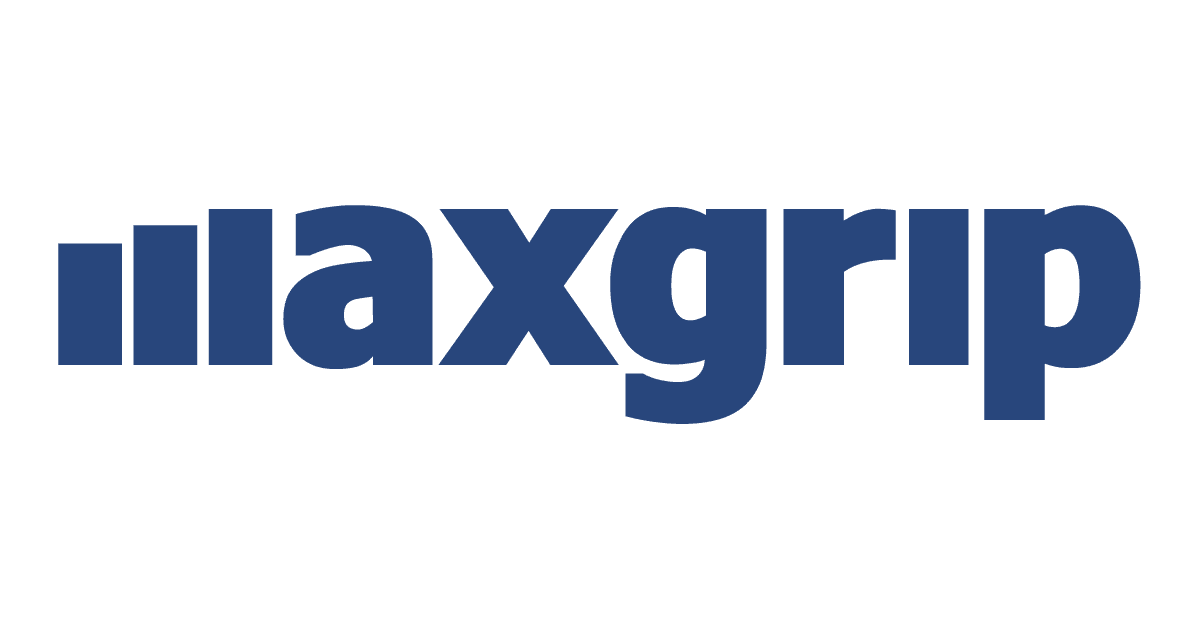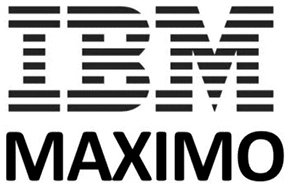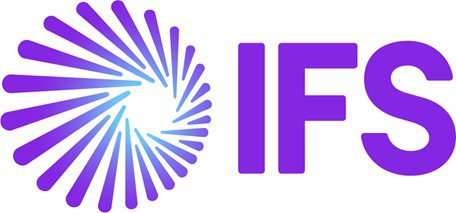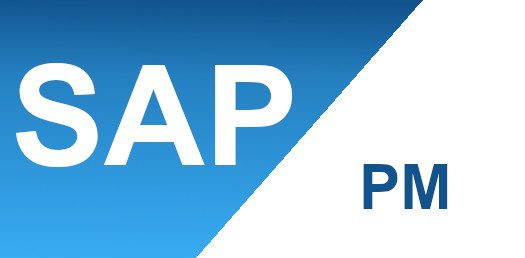An Enterprise Asset Management system is used for the management of assets throughout their lifecycle. EAM software is multidimensional and usually includes maintenance management, planning and scheduling, support mobility, supply chain management and Safety (EHS). When used correctly, it can improve asset performance management (APM), enhance operational efficiency, assist in maintaining a safe place to work and accelerate digital transformation.
MaxGrip has a track record in deploying, using and managing different EAM software solutions, such as IBM Maximo, IFS Ultimo, SAP PM and SAP S/4Hana, Hexagon EAM (formerly Infor EAM) and others. MaxGrip’s extensive team of consultants will support by applying their domain expertise and change management skills to have your workforce get the most out of the software and realize the benefits.
Why should you use EAM software?
Using Enterprise Asset Management (EAM) software is essential for all asset intensive organizations worldwide that manage a significant number of physical assets, such as machinery, vehicles, equipment, and infrastructure. Here are key reasons why EAM software is beneficial:
-
Enhanced Asset Lifecycle Management: EAM software provides a comprehensive view of each asset’s lifecycle, from acquisition and installation through operation, maintenance, and eventual disposal. This holistic management helps in maximizing the asset’s value and extending its useful life.
-
Improved Maintenance Management: EAM software enables effective scheduling of preventive maintenance, reducing the likelihood of unexpected breakdowns. This proactive approach to maintenance can lead to lower repair costs and extended asset life.
-
Increased Operational Efficiency: By streamlining maintenance processes and enabling efficient work order management, EAM software helps in reducing downtime and enhancing productivity. It allows for better planning and allocation of resources, leading to smoother operations.
-
Cost Reduction and Control: EAM software helps in tracking and analyzing maintenance and operation costs, enabling better budgeting and expenditure control. It aids in identifying areas where costs can be reduced without compromising on performance or safety.
-
Regulatory Compliance and Risk Management: EAM software assists in ensuring compliance with industry standards and regulations by maintaining accurate records, scheduling necessary inspections, and documenting maintenance and safety procedures.
-
Data-Driven Decision Making: The analytics and reporting capabilities of EAM software provide valuable insights into asset performance and maintenance effectiveness. This data-driven approach supports informed decision-making and strategic planning.
-
Inventory and Spare Parts Management: Efficient management of spare parts inventory is facilitated by EAM software, reducing the risk of stockouts or overstocking, which in turn helps in optimizing inventory costs.
-
Safety and Reliability: EAM software helps ensure that assets are maintained properly and operate within safety parameters, reducing the risk of accidents and enhancing overall workplace safety.
-
Sustainability and Environmental Compliance: By optimizing asset use and maintenance, EAM software can contribute to energy efficiency and environmental compliance, supporting sustainability goals.
-
Scalability and Flexibility: As organizations grow, EAM software can scale to accommodate additional assets and more complex operations, adapting to changing business needs.
Watch Now
MaxGrip EAM Deployments Explained in 90 Seconds
Why Partner with MaxGrip for you EAM System Implementation and Deployment?
EAM System Implementation vs Deployment
EAM deployment and implementation means that the EAM software is installed and ready to be used by the organization. Deployment is the next step: full user adoption, meaning that the workforce is able to harness the full potential of the EAM system. That is where MaxGrip comes in. We have a global track record in EAM system implementations and deployments.
Independent Partner
We are an independent consultancy firm and respected by our partners and clients for providing our combination of domain expertise and change management skills. Our consultants have experience in multi-site projects with various EAM systems, such as:
Achieving Organizational Change
For a successful deployment of an Enterprise Asset Management system, change management plays an essential role. We understand that your people are pivotal in your ability to succeed with a project like this, as it brings about a significant change. MaxGrip’s holistic approach to organizational change is an integral part of our services. The combination of our domain expertise and change management experience are a powerful way to realize transformation, sustain growth and achieve goals.
“There’s a lot of great technology out there, but where we see companies really struggling is with how to adopt that new technology. This is where MaxGrip has years of expertise. […] That’s where the value is.”
Bob Francis, LNS Research
Maximizing Your EAM System Potential: Steps to Achieve Optimal Result
The journey to realizing the full potential of an Enterprise Asset Management (EAM) system involves a series of strategic steps, designed to ensure both immediate and long-term value. At MaxGrip, we understand the importance of aligning the EAM system deployment with your unique business context. Our approach is focused not just on implementing a system, but on transforming how your team interacts with it. Here’s how we guide you through each crucial phase:
-
Strategic Blueprinting and KPI Establishment:
-
We begin by creating a strategic blueprint for your EAM system. This involves understanding your specific business needs and outlining a plan that aligns with these objectives.
-
Key Performance Indicators (KPIs) are set up to measure success and ensure that the system delivers tangible benefits aligned with your business goals.
-
-
Enhancing Data Quality:
-
A core component of effective EAM implementation is ensuring high-quality data. We work on refining data accuracy and reliability, which forms the backbone of decision-making processes.
-
-
Functional Implementation and Process Optimization:
-
Our team assists in the functional deployment of the EAM system, ensuring it integrates seamlessly with existing workflows.
-
We identify areas for process improvement, ensuring that your EAM system enhances operational efficiency.
-
-
Comprehensive Training, Documentation, and Coaching:
-
To ensure smooth adoption, we provide thorough documentation, coaching, and ongoing training. This empowers your team to effectively utilize the new system.
-
Training is tailored to various roles within your organization, ensuring everyone is proficient in using the EAM system.
-
-
Organizational Readiness and Change Management:
-
Preparing your organization for change is vital. We focus on change management strategies to facilitate a smooth transition.
-
Getting buy-in from key stakeholders and system users is a critical step in this phase, ensuring widespread acceptance and use of the new system.
-
-
Effective Project Management:
-
Our expert project managers oversee the entire deployment process, ensuring adherence to timelines and budgets, and coordinating different aspects of the project.
-
-
Advancing APM Strategies:
-
As part of the EAM system implementation, we also enhance your Asset Performance Management (APM) strategies. This ensures that the system supports proactive asset management and maintenance.
-
By following these steps, we ensure that your EAM system is not just a tool, but a transformative solution that brings lasting benefits and maximum efficiency to your organization. Our aim is to ensure that your team not only adopts the new system but fully embraces and excels in this new way of working.
SUCCESS STORY
Frequently Asked Questions About EAM System Implementations
What is EAM implementation?
Enterprise Asset Management (EAM) implementation refers to the process of setting up and integrating an EAM system within an organization. This process typically involves several key steps:
-
Needs Assessment: Understanding the specific needs and objectives of the organization with regard to asset management, such as reducing total cost of ownership, improving maintenance scheduling, or enhancing asset lifecycle management.
-
Choosing the Right EAM Software: Selecting an EAM solution that aligns with the organization’s requirements. This involves comparing different EAM systems based on features, scalability, compatibility with existing systems, and overall cost.
-
Data Foundation: Establishing a solid foundation for the data to be managed in the EAM system. This includes standardizing and cleaning existing asset data, setting up a structured asset hierarchy, and defining asset criticality.
-
System Customization and Configuration: Tailoring the EAM system to meet the specific workflow, reporting, and operational needs of the organization. This might involve customizing interfaces, reports, and dashboards.
-
Integration with Other Systems: Ensuring the EAM system integrates seamlessly with other business systems like ERP, HR, and financial systems for comprehensive data management and workflow efficiency.
-
User Training and Support: Providing comprehensive training to the staff who will use the EAM system, covering both technical and procedural aspects, to ensure successful adoption and effective usage.
-
Implementation and Go-Live: Rolling out the EAM system across the organization, starting with a pilot phase if necessary, followed by a full-scale implementation. This stage may involve data migration from old systems and initial user onboarding.
-
Ongoing Review and Optimization: Continuously monitoring the EAM system’s performance, gathering user feedback, and making necessary adjustments to processes, workflows, or system configurations to enhance its effectiveness.
Successful EAM implementation results in more efficient and effective management of an organization’s physical assets, leading to reduced costs, improved asset availability, and better compliance with regulations. It also helps organizations in making informed decisions regarding asset maintenance, replacement, and investment in most critical assets.
What Does EAM Stand For?
EAM stands for “Enterprise Asset Management.” This refers to a systematic approach to managing and optimizing the lifecycle of physical assets within an organization. EAM typically includes processes such as the design, construction, operation, maintenance, replacement, and disposal of assets. It encompasses a broad range of activities aimed at maximizing performance, improving operational efficiency, and reducing costs, often supported by software solutions to manage these complex tasks.
What is the Difference Between APM Software and EAM Software?
Asset Performance Management (APM) software and Enterprise Asset Management (EAM) software are both critical tools in managing assets within an organization, but they focus on different aspects of asset management and serve complementary functions.
APM (Asset Performance Management) Software
APM software is primarily focused on optimizing the performance, reliability, and availability of physical assets throughout their lifecycle. Its main goals include:
-
Improving Asset Reliability and Availability: APM tools monitor the health and performance of assets in real-time, predicting failures and identifying maintenance needs before they result in downtime.
-
Predictive Maintenance: Utilizing data analytics, APM can forecast when an asset is likely to fail or require maintenance, allowing for proactive interventions.
-
Performance Optimization: APM solutions analyze operational data to optimize the performance and efficiency of assets, ensuring they operate within optimal parameters.
-
Risk Management: APM assesses and mitigates risks associated with asset failure, helping to ensure safety and compliance with regulations.
EAM (Enterprise Asset Management) Software
EAM software offers a broader scope, focusing on the comprehensive management of an organization’s physical assets throughout their entire lifecycle, from acquisition to disposal. Key features of EAM include:
-
Asset Lifecycle Management: EAM systems track the entire lifecycle of assets, from procurement and installation to maintenance, replacement, and disposal.
-
Maintenance Management: EAM facilitates both preventive and corrective maintenance scheduling, work order management, and resource allocation to ensure assets are maintained effectively.
-
Asset Inventory and Tracking: EAM provides a centralized database for all asset information, including specifications, location, maintenance history, and performance data.
-
Compliance and Reporting: EAM solutions help organizations comply with regulatory requirements by maintaining detailed records of asset maintenance, inspections, and performance.
Key Differences:
-
Focus Area: APM is more focused on the performance and reliability aspects of assets, using predictive analytics to prevent failures. EAM, on the other hand, provides a broader view of asset management, encompassing procurement, maintenance, and disposal of assets.
-
Goal Orientation: APM aims to optimize asset performance and minimize downtime, while EAM is concerned with the overall management of assets, including financial, operational, and maintenance aspects.
-
Functionality: APM tends to be more analytics-driven, utilizing data from sensors and other IoT devices to predict asset behavior. EAM is more administrative, focusing on the management, scheduling, and documentation of assets.
In practice, many organizations utilize both APM and EAM systems in tandem to achieve a holistic approach to asset management, leveraging the predictive analytics and performance optimization of APM along with the comprehensive asset lifecycle management capabilities of EAM.
Is EAM Part of SAP?
Enterprise Asset Management (EAM) is a critical component of modern enterprise software solutions, with various providers offering robust EAM systems. SAP, a leading enterprise software provider, includes EAM as part of its complete suite of applications, particularly within the SAP S/4HANA and SAP ERP Central Component (ECC) suites. SAP’s EAM solution integrates seamlessly with its ERP system, providing comprehensive asset lifecycle management capabilities. Additionally, there are other notable EAM systems in the market such as IFS’s EAM software, IFS Ultimo, and IBM Maximo. These systems offer specialized functionalities tailored to different organizational needs and are known for their ability to manage and optimize the performance and lifespan of physical assets. IFS’s solutions, including IFS Ultimo, are recognized for their flexibility and industry-specific features, while IBM Maximo is renowned for its extensive asset management capabilities and integration options. The choice of an EAM system depends on various factors including specific business requirements, existing IT infrastructure, and industry type, with each system offering unique strengths and capabilities.
What Does an EAM System Consultant Do?
Engaging an Enterprise Asset Management (EAM) consultant offers numerous benefits for organizations looking to optimize their asset management strategies and systems. The expertise and guidance provided by an EAM consultant can significantly enhance the effectiveness of your asset management practices. Here are the key advantages of working with an EAM consultant:
-
Expert Assessment and Tailored Analysis
-
Strategic Asset Management Planning
-
Efficient EAM System Implementation
-
Enhanced Process Efficiency
-
Comprehensive Training and Support
-
Smooth Change Management
-
Data-Driven Decision Making
-
Compliance and Risk Mitigation
-
Ongoing Improvement and Adaptation
-
Collaborative and Holistic Approach
What is the Difference Between EAM and CMMS Systems?
EAM (Enterprise Asset Management) system and CMMS (Computerized Maintenance Management System) are both important tools in the management of organizational assets, but they serve different functions and have distinct scopes.
-
Enterprise Asset Management (EAM) system:
-
Scope: EAM has a broader scope, encompassing the entire lifecycle of an organization’s physical assets from acquisition to disposal. This includes design, operation, maintenance, and replacement.
-
Capabilities: EAM solutions offer more extensive features beyond maintenance, such as asset lifecycle analysis, long-term asset planning, and integration with other enterprise systems like ERP (Enterprise Resource Planning), financials, and human resources.
-
Objective: EAM is focused on optimizing the performance and extending the life of assets, reducing overall costs, and improving return on assets. It offers strategic insights into asset utilization, risk management, and compliance.
-
-
CMMS:
-
Scope: CMMS is more narrowly focused on the maintenance aspects of asset management. It primarily handles maintenance activities, work orders, scheduling, and tracking.
-
Capabilities: CMMS is designed to automate maintenance tasks, streamline workflows, manage spare parts inventories, and track maintenance records. It is usually less comprehensive in asset lifecycle management compared to EAM.
-
Objective: The main goal of a CMMS is to improve maintenance efficiency, reduce downtime, and ensure that assets are maintained properly. It provides operational insights and helps in day-to-day maintenance.
-
In summary, while CMMS is primarily concerned with the maintenance of assets, EAM provides a holistic view of the entire lifecycle of assets, integrating maintenance with broader operational and strategic business functions. Organizations often start with a CMMS to manage maintenance activities and later adopt an EAM system as their needs evolve to include broader asset management capabilities.
How Do You Implement an Enterprise Asset Management (EAM) System?
Implementing an Enterprise Asset Management (EAM) system, is a complex process that requires careful planning and execution. Here are key steps to consider:
-
Define Objectives and Scope:
-
Clearly define what you aim to achieve with the asset management system.
-
Establish specific goals such as improving asset utilization, reducing costs, enhancing compliance, or improving asset lifecycle management.
-
-
Assess Current Asset Management Practices:
-
Conduct a thorough assessment of existing asset management processes and systems.
-
Identify gaps, inefficiencies, and areas for improvement.
-
-
Select the Right Asset Management Software:
-
Choose a software solution that aligns with your organizational needs and objectives.
-
Consider factors such as scalability, ease of use, integration capabilities, and vendor support.
-
-
Develop a Project Plan:
-
Create a detailed project plan outlining timelines, milestones, resources needed, and responsibilities.
-
Ensure the plan includes phases like system selection, implementation, testing, training, and go-live.
-
-
Engage Stakeholders:
-
Involve key stakeholders from various departments such as IT, finance, operations, and maintenance.
-
Communicate the benefits of the new system and address any concerns or resistance.
-
-
Data Migration and System Configuration:
-
Migrate data from existing systems to the new EAM system.
-
Ensure data accuracy and integrity during the migration process.
-
Customize and configure the system according to organizational requirements.
-
-
Integration with Other Systems:
-
Integrate the EAM system with other enterprise systems like ERP, CRM, or financial software.
-
Ensure seamless data flow and interoperability between systems.
-
-
Testing and Validation:
-
Conduct thorough testing of the system to identify and resolve any issues.
-
Validate the system’s functionalities against your processes and requirements.
-
-
Training and User Adoption:
-
Develop and execute a comprehensive training program for all users.
-
Focus on change management to encourage user adoption and minimize resistance.
-
-
Go-Live and Support:
-
Plan and execute a phased or full go-live strategy.
-
Provide ongoing support and resources to address any post-implementation issues.
-
-
Continuous Improvement and Maintenance:
-
Regularly review and assess the system’s performance.
-
Gather user feedback for continuous improvement.
-
Keep the system updated and maintain it to ensure its effectiveness over time.
-
EAM Deployment: Maximizing Value and Adoption
Following the successful implementation of an EAM system, the focus shifts to deployment, aimed at ensuring full user adoption and maximizing the value derived from the system. Deployment involves several key actions:
-
Embedding Best Practices: Training sessions should go beyond basic functionality to include best practices in asset management, helping users understand how to leverage the system for optimal results.
-
Customizing User Experience: Tailor the EAM interface and functionalities to match the specific needs and workflows of different user groups within the organization, enhancing user friendliness and efficiency.
-
Facilitating Peer Learning: Encourage a culture of knowledge sharing among users, where best practices, tips, and successful use cases are openly shared, fostering a community of continuous learning.
-
Monitoring and Feedback Loops: Establish mechanisms to monitor how the system is being used across the organization and gather feedback from users. Use this insight to make iterative improvements, addressing any usability issues and aligning the system more closely with user needs.
-
Ongoing Support and Resources: Provide users with easy access to support resources, including training materials, user guides, and a helpdesk. Ongoing support reassures users and helps resolve issues promptly, maintaining confidence in the system.
-
Championing Change: Identify and empower ‘EAM Champions’ within the organization who can advocate for the system, assist their peers, and drive positive change.
By focusing on these aspects of deployment, organizations can ensure that the EAM system becomes an integral part of their asset management strategy, driving efficiency, reducing costs, and ultimately contributing to the organization’s bottom line. Effective deployment is as much about people and processes as it is about the technology itself, requiring a concerted effort to engage users, streamline workflows, and foster an environment of continuous improvement.
What is an Enterprise Asset Management System?
An Enterprise Asset Management (EAM) system is a comprehensive solution designed to manage and optimize the lifecycle of an organization’s physical assets. It encompasses a wide range of functionalities and processes, aiming to maximize performance, minimize costs, and ensure the effective utilization of assets throughout their entire lifecycle. Key aspects of an EAM system include:
-
Asset Lifecycle Management: EAM systems provide tools for managing assets from acquisition or creation through to disposal. This includes tracking the history, performance, and maintenance of assets.
-
Maintenance Management: One of the core functions of EAM is to manage and schedule maintenance activities. This includes routine maintenance, scheduled repairs, and inspections to ensure asset reliability and reduce downtime.
-
Work Order Management: EAM systems allow organizations to create, assign, track, and close work orders for maintenance tasks, ensuring efficient workflow and resource allocation.
-
Inventory and Spare Parts Management: EAM helps manage inventory levels of spare parts and supplies, optimizing stock levels to support maintenance activities without overstocking.
-
Asset Performance Analysis: By collecting and analyzing data from assets, EAM systems help in understanding performance, predicting failures, and making informed decisions about maintenance and asset utilization.
-
Compliance and Risk Management: EAM systems support compliance with industry regulations and standards by maintaining records of maintenance activities, safety procedures, and environmental impacts.
-
Integration with Other Systems: EAM solutions often integrate with other enterprise systems such as ERP (Enterprise Resource Planning), financial systems, and HR software, providing a holistic view of the organization’s operations.
-
Reporting and Dashboards: EAM systems offer reporting tools and dashboards that provide insights into performance, maintenance costs, and other key metrics.
-
Mobile Accessibility: Modern EAM systems often feature mobile accessibility, allowing field technicians to access and update information in real-time.
-
Scalability and Customization: EAM solutions can be scaled to fit the size and complexity of any organization and can be customized to meet specific industry or business needs.
Overall, an EAM system is a strategic tool that helps organizations manage their assets more effectively, leading to increased productivity, lower costs, and improved asset reliability and lifespan. It is particularly crucial for asset-intensive industries such as manufacturing, utilities, transportation, and public infrastructure.
What is IBM Maximo Implementation & Deployment?
Implementing IBM Maximo EAM is a strategic initiative for organizations aiming to optimize the lifecycle management of their physical assets, which may include infrastructure, machinery, transportation, and communication systems. As a part of the broad spectrum of EAM solutions, IBM Maximo stands out for its comprehensive features and capabilities, making it a viable choice alongside other prominent systems like SAP EAM, IFS, and Ultimo. To ensure the selection of an EAM solution that best suits their specific asset management requirements, organizations should undertake a thorough evaluation of these systems. Moreover, keeping abreast of the latest developments in the field, such as the Maximo Application Suite (MAS), is crucial.
The process of implementing Maximo or any EAM system encompasses several dimensions that extend beyond the mere technical setup of the software. It involves aligning the system with the organization’s processes, ensuring widespread user adoption, and achieving the overarching asset management objectives. While an organization’s internal IT team can undertake the implementation process, it is often more effective to engage consultants who specialize in Maximo, EAM systems, and the latest advancements like MAS, to leverage their expertise for a more efficient setup.
As an IBM Silver Partner, MaxGrip brings a wealth of knowledge and experience to the table, ensuring a smooth Maximo implementation and deployment process. This partnership signifies a high level of competence and commitment to delivering quality solutions, making MaxGrip a reliable choice for organizations looking to harness the full potential of their EAM system.
Key Considerations for IBM Maximo Implementation and Deployment:
-
Objective Definition: Clearly articulate what you aim to achieve with Maximo, whether it’s enhancing asset utilization, reducing maintenance costs, or improving compliance and safety standards.
-
Assessment of Current Practices: Evaluate existing asset management processes to identify gaps and areas for improvement that Maximo can address.
-
Strategic Planning: Develop a comprehensive project plan that outlines the implementation roadmap, including system customization, data migration, integration with other enterprise systems, and user training.
-
Data Management: Pay special attention to data quality and standardization, as this forms the backbone of effective asset management. Ensure that the EAM system serves as a single source of truth for asset-related data.
-
Stakeholder Engagement: Involve stakeholders from various departments to ensure the system meets cross-functional requirements and facilitates seamless workflows.
-
Training and Change Management: Implement a robust training program to foster user adoption and adaptability to the new system. Emphasize the benefits and efficiencies Maximo brings to the organization to overcome resistance and ensure a smooth transition.
-
Continuous Improvement: Post-deployment, regularly review the system’s performance, gather user feedback, and make necessary adjustments to optimize the EAM system’s effectiveness.
By following these guidelines and leveraging the expertise of an IBM Silver Partner like MaxGrip, organizations can ensure a successful Maximo implementation and deployment, leading to enhanced asset performance and operational efficiency.
What are the Basics of EAM?
Enterprise Asset Management (EAM) software is a comprehensive system designed to manage and optimize the lifecycle of physical assets within an organization. These assets can range from machinery, vehicles, and equipment to infrastructure and buildings. EAM software aims to improve asset utilization, enhance asset performance, reduce costs, and ensure compliance with industry standards and regulations. Here are the basics of EAM software:
-
Asset Lifecycle Management:
EAM software provides tools to manage assets from acquisition through disposal. This includes tracking the history, performance, maintenance, and depreciation of each asset, enabling organizations to make informed decisions about asset utilization, refurbishment, or replacement. -
Maintenance Management:
One of the core functions of EAM is to facilitate both preventive and corrective maintenance. It allows for scheduling maintenance tasks, managing work orders, assigning resources, and tracking maintenance activities to ensure assets are kept in optimal condition, thereby reducing unplanned downtime. -
Work Order Management:
EAM systems streamline the creation, assignment, execution, and closure of work orders. This feature ensures that maintenance tasks are efficiently managed and completed, with all relevant information captured for future reference and analysis. -
Inventory and Procurement Management:
EAM software helps manage spare parts inventory, ensuring that critical parts are available when needed. It can automate procurement processes, track inventory levels, and manage suppliers, which contributes to minimizing stockouts and reducing carrying costs. -
Asset Performance Analysis:
EAM tools provide analytics and reporting capabilities to assess the performance and reliability of assets. This data-driven approach helps organizations identify trends, predict failures, and make evidence-based decisions to optimize asset performance and extend their lifecycle. -
Regulatory Compliance and Safety:
EAM software aids in compliance with industry standards, regulations, and safety requirements by maintaining detailed records of maintenance activities, inspections, and certifications. This ensures that assets are operated safely and in accordance with legal requirements. -
Integration Capabilities:
Modern EAM solutions can integrate with other enterprise systems such as ERP (Enterprise Resource Planning), CMMS and IoT (Internet of Things) devices. This integration allows for seamless data exchange and a unified view of operations, enhancing decision-making and operational efficiency. -
Mobile Accessibility:
Many EAM solutions offer mobile capabilities, allowing field technicians and managers to access real-time data, update work orders, and perform asset inspections using smartphones or tablets, improving productivity and response times. -
Customization and Scalability:
EAM systems are often customizable to fit the specific needs of an organization and scalable to accommodate growth. This means that businesses can tailor the software to their unique processes and expand its capabilities as their asset portfolio grows.
EAM software is essential for organizations with significant investments in physical assets, as it helps to maximize asset value, improve operational efficiency, and reduce costs throughout the asset lifecycle.
Why is Change Management Important for the Success of an EAM System Deployment?
Change management plays a crucial role in the successful implementation of an Enterprise Asset Management (EAM) system for several reasons:
-
Facilitating Adoption: Change management helps in preparing and guiding employees through the transition to a new EAM system. It addresses the human element of the deployment, ensuring that staff members are ready and willing to use the new system and processes effectively.
-
Minimizing Resistance: Introducing a new system often encounters resistance from employees accustomed to existing processes. Effective change management strategies help in addressing concerns and reducing resistance, thereby fostering a more receptive environment.
-
Enhancing Training and Understanding: Change management involves comprehensive training and communication, which are key to ensuring that all users understand how to utilize the new EAM system efficiently and are aware of its benefits.
-
Aligning EAM with Organizational Goals: Change management aligns the EAM system implementation with the organization’s goals and strategies. This alignment ensures that the EAM system supports overall business objectives and processes.
-
Ensuring Continuity and Reducing Disruption: Through proper change management, disruptions to daily operations during the transition to the new EAM system are minimized. It ensures continuity of operations while transitioning to the new system.
-
Promoting User Engagement and Feedback: Change management encourages user engagement and feedback, which are essential for continuous improvement of the EAM system post-implementation.
-
Building a Culture of Continuous Improvement: Effective change management fosters a culture of adaptability and continuous improvement, which is essential for the long-term success and evolution of the EAM system in response to changing organizational needs.
How can a team effectively utilize a newly implemented EAM system to maximize its benefits?
Successfully implementing an Enterprise Asset Management (EAM) system is just the first step towards enhancing your organization’s asset management capabilities. To truly get the most out of your EAM system, your team must adopt a comprehensive approach that encompasses proper training, data integrity, and process optimization. We call that EAM deployment, what you can do to get the maximum results out of your EAM software:
-
Invest in Training: A crucial aspect of maximizing EAM system benefits is ensuring that your team is well-trained to use the system efficiently. Training should be continuous and evolve with system updates and changes in business processes.
-
Ensure Data Accuracy: The foundation of a powerful EAM system is accurate and standardized data. Regular data audits and clean-ups can help maintain the integrity of the system’s information, leading to more reliable reporting and decision-making.
-
Optimize Work Processes: Review and optimize your maintenance and asset management processes to align with the EAM system’s capabilities. Streamlining workflows through the EAM system can lead to improved operational efficiency and asset utilization.
-
Align Roles and Responsibilities: Ensure that the right people (and roles) do the right work according to the optimized work processes.
-
Embrace the System’s Full Functionality: Explore and utilize the full range of features offered by your EAM system. This may include preventive maintenance scheduling, inventory management, and performance analytics.
-
Promote User Adoption: Encourage your team to fully adopt the EAM system by demonstrating its benefits, providing ongoing support, and fostering a culture that values technology as a tool for improvement.
-
Set up a KPI Dashboard, track and trace: Choose KPIs that align with overall business objectives. Keep track of progress and continuously improve performance.
-
Feedback Loop: Create a feedback loop where users can report issues, suggest improvements, and share success stories. This will not only improve the system but also increase user engagement.
By focusing on these areas, your team can leverage the EAM system to create more value, beyond the scope of technical implementation, ensuring that the investment into the system translates into tangible business outcomes.
Who is a IBM Maximo Consultant?
A Maximo Consultant is a highly skilled professional specializing in IBM Maximo Asset Management Solution, an advanced Enterprise Asset Management (EAM) system. Their expertise is essential for organizations seeking to leverage Maximo for optimizing their asset management strategies and operations. At MaxGrip, our team of Maximo Consultants brings extensive experience and deep industry knowledge, ensuring the effective implementation and management of Maximo systems. Their roles and responsibilities encompass a broad range of functions, including:
System Implementation and Configuration: Maximo Consultants at MaxGrip assist organizations in installing, setting up, and configuring the Maximo EAM system, aligning it with specific asset management requirements and business processes. This ensures that the system reflects the unique operational landscape of each organization.
Customization and Enhancement: These consultants specialize in customizing the Maximo system to fit the distinct needs of different organizations. This customization can involve modifying workflows, user interfaces, generating custom reports, and developing unique functionalities that cater to specific organizational needs.
Data Migration and Integration: They guide the process of transferring existing asset and maintenance data into the Maximo system. This involves ensuring the integrity and accuracy of the data during migration and integrating Maximo with other enterprise systems such as ERP, CRM, or financial software, facilitating a unified operational approach.
Training and User Adoption: Maximo Consultants at MaxGrip are responsible for training staff in the effective use of the Maximo system. They manage change within the organization, ensuring a smooth transition to the new system and fostering user adoption while minimizing resistance.
Maintenance and Support: They provide ongoing support and maintenance for the Maximo system, troubleshooting any issues, applying necessary updates, and ensuring optimal performance of the system over time.
Consulting on Best Practices: Our consultants advise on best practices in asset management, helping organizations to fully leverage Maximo for improved performance, efficient maintenance scheduling, and effective lifecycle management of assets.
Performance Optimization: They analyze how organizations utilize Maximo, recommending improvements or optimizations to enhance both system performance and the user experience.
Regulatory Compliance and Risk Management: Ensuring that the asset management processes facilitated by Maximo comply with industry standards and regulatory requirements is a key aspect of their role.
Project Management: Maximo Consultants at MaxGrip oversee projects related to the implementation or upgrade of Maximo systems, ensuring that these projects are completed on time, within budget, and in alignment with organizational objectives.
Our Maximo Consultants blend their technical proficiency in IBM Maximo with a comprehensive understanding of asset management processes. Their role as asset management consultants is pivotal in helping organizations maximize the benefits of their EAM system, leading to improved operational efficiency, cost reduction, and enhanced reliability and longevity of assets.
What is EAM Service?
EAM service, in the context of Enterprise Asset Management solutions, refers to a range of services provided by companies or consultants to help organizations effectively manage and optimize the performance of their physical assets throughout their entire lifecycle. These services are designed to assist organizations in implementing, managing, and maximizing the benefits of their EAM systems and processes. Key aspects of EAM service include:
-
Implementation Services: Assisting organizations in selecting and implementing an EAM software system that aligns with their specific needs. This includes system configuration, integration with other business systems, and setting up modules for asset tracking, maintenance scheduling, work order management, and more.
-
Consulting and Strategy Development: Providing expert advice on developing and refining asset management strategies. This can involve aligning EAM practices with business goals, regulatory compliance, and industry standards.
-
Training and Support: Offering training programs to educate staff on how to use the EAM system effectively. Continuous support and troubleshooting services are also part of this, ensuring the EAM system operates smoothly.
-
Process Optimization: Analyzing current asset management processes and identifying areas for improvement. This could involve streamlining maintenance workflows, improving inventory management, or enhancing asset lifecycle analysis.
-
Data Management and Analytics: Helping organizations manage asset data effectively, including data migration, cleansing, and ensuring data accuracy. Advanced analytics services can provide insights into performance, predictive maintenance, and decision-making.
-
Customization and Integration: Tailoring the EAM system to meet specific organizational needs, including customizing reports, dashboards, and integrating with other enterprise systems like ERP, CRM, or HR software.
-
Change Management: Assisting organizations with the change management process associated with implementing a new EAM system or revamping existing asset management practices.
-
Compliance and Risk Management: Ensuring that asset management practices comply with industry regulations and standards and assisting organizations in managing risks associated with their physical assets.
EAM services companies aim to help organizations maximize asset utilization, and maintenance teams enhance operational efficiency, reduce costs, and extend the useful life of assets, thereby improving overall organizational performance and asset-related decision-making.
Meet the Organizations Already Boosting Their Performance with MaxGrip
25%
Decrease of the backlog










